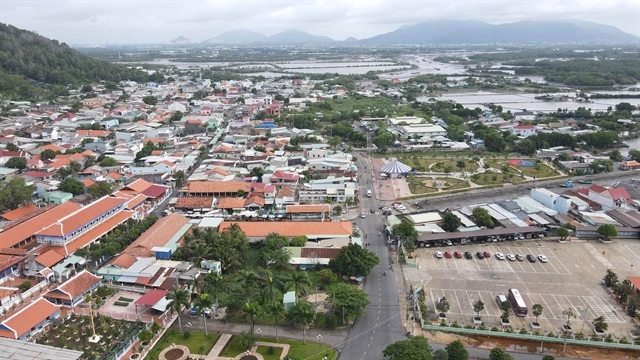 Sports
Sports

 |
| Fans in the stands at Hải Phòng FC's Lạch Tray Stadium. Hải Phòng is poised to benefit from its locality's merger with neighbouring Hải Dương, as Hải Dương's good youth development would solve a lingering problem for Hải Phòng FC. Photo courtesy of Hải Phòng FC |
Anh Đức
The merging and restructuring of provinces in Việt Nam is the buzz around town this week.
It is a remarkable change to the country not seen in decades and is poised to transform the landscape in every field, including football.
Football in Việt Nam has become part of its culture, and for locals, it is deeply embedded in their roots.
But as with other opinions regarding the preservation of post-merger local culture, there is a risk of diluting each province's football cultures and each team that has been cultivated over decades.
Provinces other than Hà Nội or Hồ Chí Minh City can now house two or more top football teams, a first for Vietnamese football. This is the case for the new province of Gia Lai, which now has Hoàng Anh Gia Lai FC and Bình Định FC after the merger.
Or in the case of Ninh Bình Province, should Phù Đổng Ninh Bình continue their unprecedented run, having won 14 matches in a row, and get promoted, they would face current V.League 1 champions Thép Xanh Nam Định in a newly created derby.
However, the question for these teams is whether their name and identity will still be kept alive or dissipate as newer generations grow and the memories of the old localities fade.
Also, new local rivalries would create more passion, but could also result in future internal competition for resources and fan support, and might not actually improve football overall in the end. This is what happened with Hồ Chí Minh City, which at times even housed three teams, but will never return to their former glory.
Now with Bình Dương FC and Bà Rịa Vũng Tàu FC, both well-developed teams in the league, this is a lesson that HCM City must re-learn, to make the city's football great again.
Still, the mergers may offer a silver lining. Currently, only 56 clubs represent the former 64 provinces in the Vietnamese football pyramid, and many of these play in lower leagues as youth or reserve teams. The most common barriers? Lack of funding and limited talent pools.
Consolidation may unlock new streams of financial support. Struggling clubs like Đồng Tháp could benefit from access to Tiền Giang’s resources after the merger, potentially reviving local football in regions where teams like Tiền Giang FC had recently folded. Meanwhile, Hải Phòng FC — criticised for its youth development — could gain immensely from a merger with Hải Dương, a province with a proven record of producing top-tier talent like Vũ Văn Thanh and Nguyễn Tiến Linh.
Mergers might also mean a more sustainable model of football governance, encouraging regional pooling of resources, improved infrastructure and stronger fan engagement. For provinces that previously lacked any presence in the league system, mergers could mean their first taste of professional football.
The next seasons of the V.League could be one of the most challenging, yet one of the most crucial and exhilarating.
If managed well, this could be a transformative moment — a rebirth for Vietnamese football that balances modernisation with heritage, and competition with unity. If not, it could leave behind a patchwork of disjointed teams and lost legacies.
The ball, quite literally, is in their court. VNS




